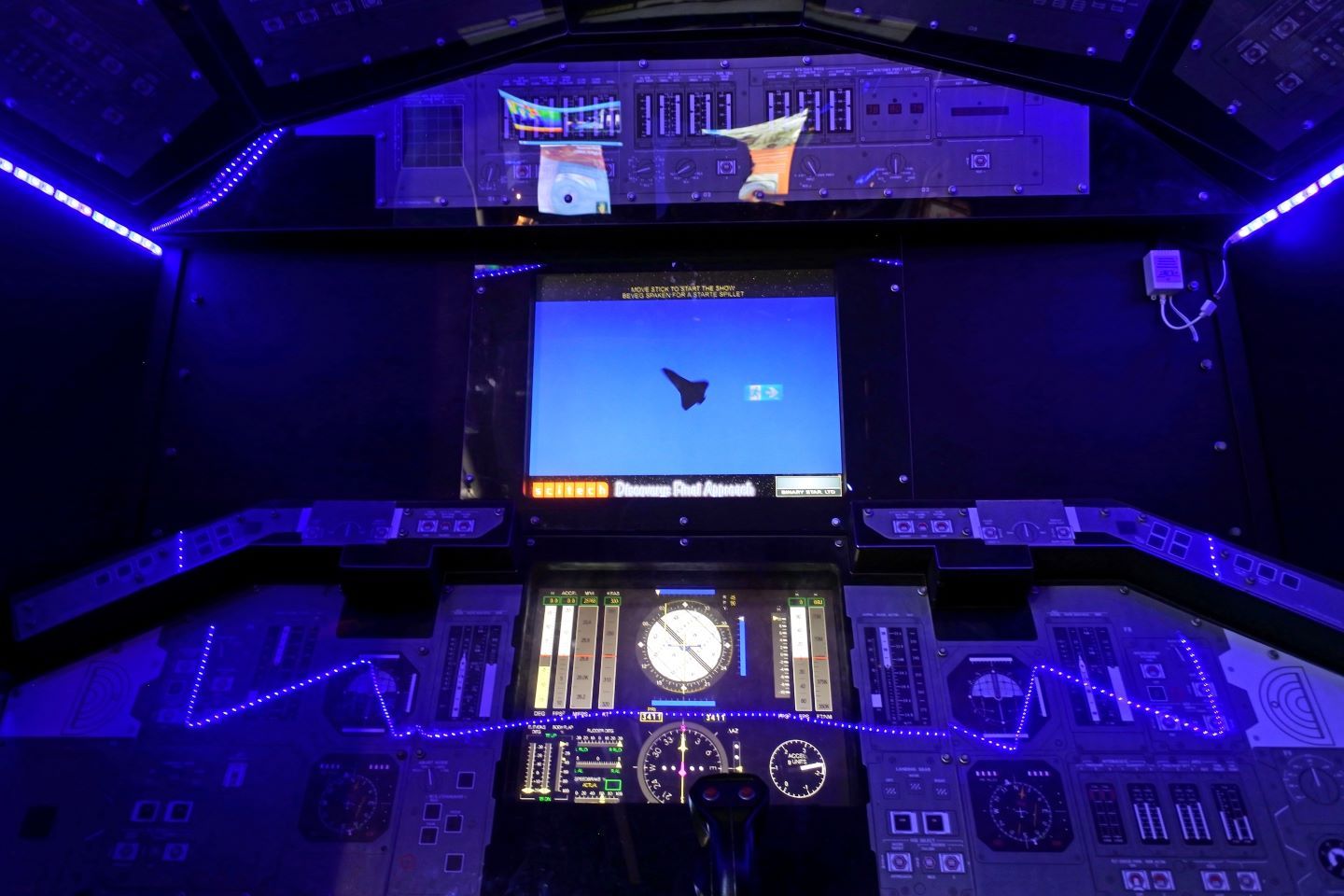Augmented reality (AR) and virtual reality (VR) are technologies with many uses in aviation. AR is a digitally enhanced version of reality and VR is a completely simulated digital world, but both are achieved through similar technology. Its vast applications include training, design, development, and maintenance. As this technology develops, it is likely to be found in most sectors of aviation, as it gains increasing functionality and efficiency.
VR provides more realistic flight simulation training. For example, it provides a greater depth of perception, useful in creating a more realistic feel of landing an aircraft. It is more cost-effective as the entire simulation environment is contained within a headset, compared to labour-intensive physical simulation cockpits – but more investment is needed to develop software specific to each aircraft. Realistic VR can supplement some flying training hours but will never be a complete substitute for the real thing, with the US Federal Aviation Administration (FAA) not allowing VR training to count towards total flight hours, despite confirming the technology’s legitimacy. VR can also substitute an instructor at the early stages of training, as is seen on Microsoft Flight Simulator. Studies show that VR can be more effective than traditional methods by up to 400%, especially for spatial and situational awareness, workload management, decision-making and problem-solving. Embry-Riddle Aeronautical University used VR training to reduce the time taken by a group of 58 students to complete their first solo flight by more than 30%. It was also used in ‘pre-flight’, simulating the checks and walk-around process. This VR simulation allows trainees to see what an actual fault would look like and practice spotting them – since aircraft are maintained to a good flying standard, these often go unseen in training.
VR was also used to simulate radio communications with virtual air traffic control. In a real training flight, there is little time for the instructor to explain the phraseology in flight; however, using VR to develop these skills, trainees can concentrate on the radio and develop fluency, practising at their own pace. The United States Air Force’s (USAF) Technology Transfer and Transition program (T3) launched in 2020 and is developing VR technology for use in training military pilots, with lessons already in flying and combat readiness exercises, but also other types of digital lessons. In July and August 2020, T3 ran its first course and although the end-of-course assessment scores were comparable to conventional training, the course was completed in 12.5 days as opposed to 27 days – 46% faster. They are also developing AI to interact with the students and measure their performance. Now applying VR to fighter pilot training, the USAF has found that students who fly 5th generation fighters are leading over the students who fly the 4th generation fighters, possibly due to 5th generation platforms having more in-flight software integration.
AR also has many useful engineering applications for design and manufacturing, maximising efficiency by combining digital enhancements with human expertise and intuition. AR and VR allow for the visualisation of complex mechanisms and other items, allowing prototyping and implementation to advance more quickly. For example, Airbus has worked with AR developers to create an application for Vuzix AR Smart Glasses, simplifying the process of cabin seat assembling. In less than a month, workers were placing seat markers six times faster without mistakes. Airbus plans to expand this to other manufacturing processes. Lockheed Martin has collaborated with Ngrain to use AR glasses on the development of the F-35, providing their engineers with real-time visual instructions, working 30% faster and with near-perfect accuracy.
AR is also improving aircraft maintenance, using 3D scanning to easily find faults. This has now been integrated with drone technology to autonomise the process, saving maintenance technicians time in ensuring safety and repairs and getting the aircraft flying again sooner. A drone can complete inspections that would take a human two full working days in two hours, completing the tasks more safely without ladders and scaffolding. AR also allows for easier communication between technicians over distance, using pictures and videos to find solutions faster. AR and VR technology is streamlining many processes within the aviation industry and its further implementation will result in safer flights, quicker services and eventually reduced costs.

US Tariffs are shifting - will you react or anticipate?
Don’t let policy changes catch you off guard. Stay proactive with real-time data and expert analysis.
By GlobalData




